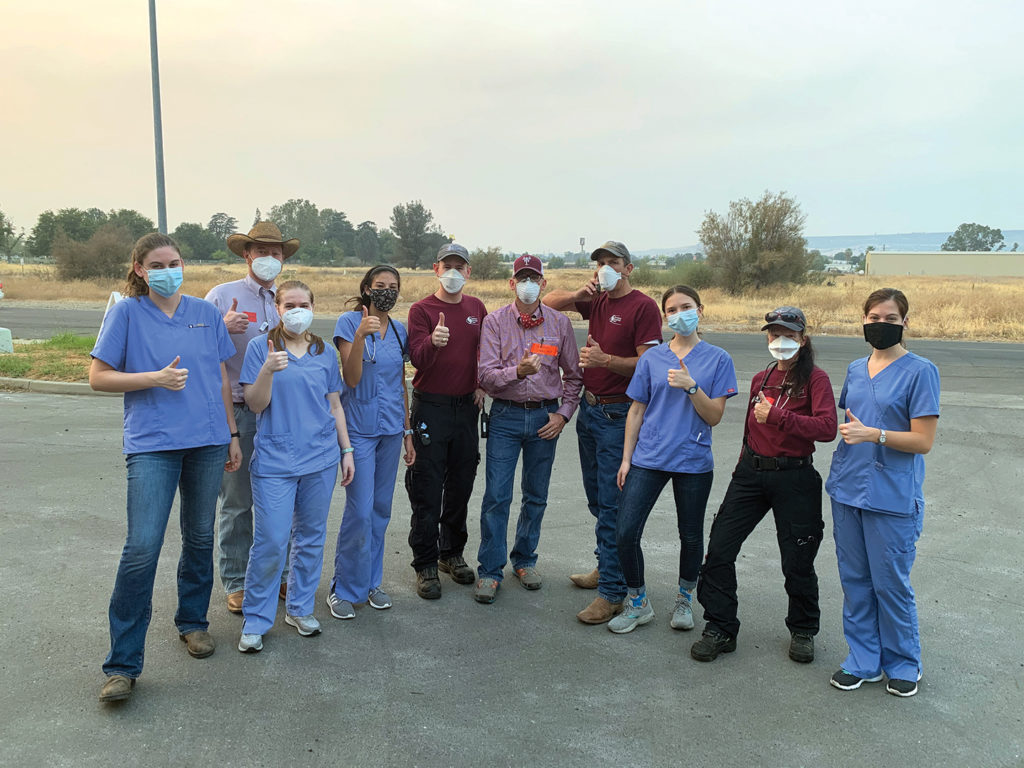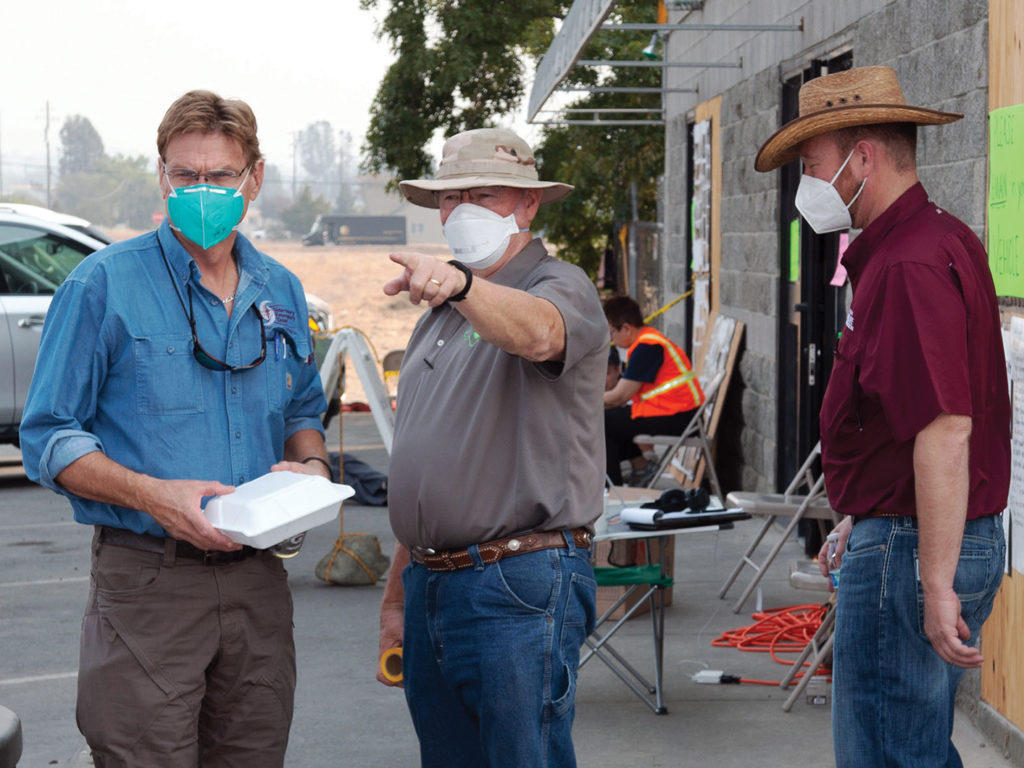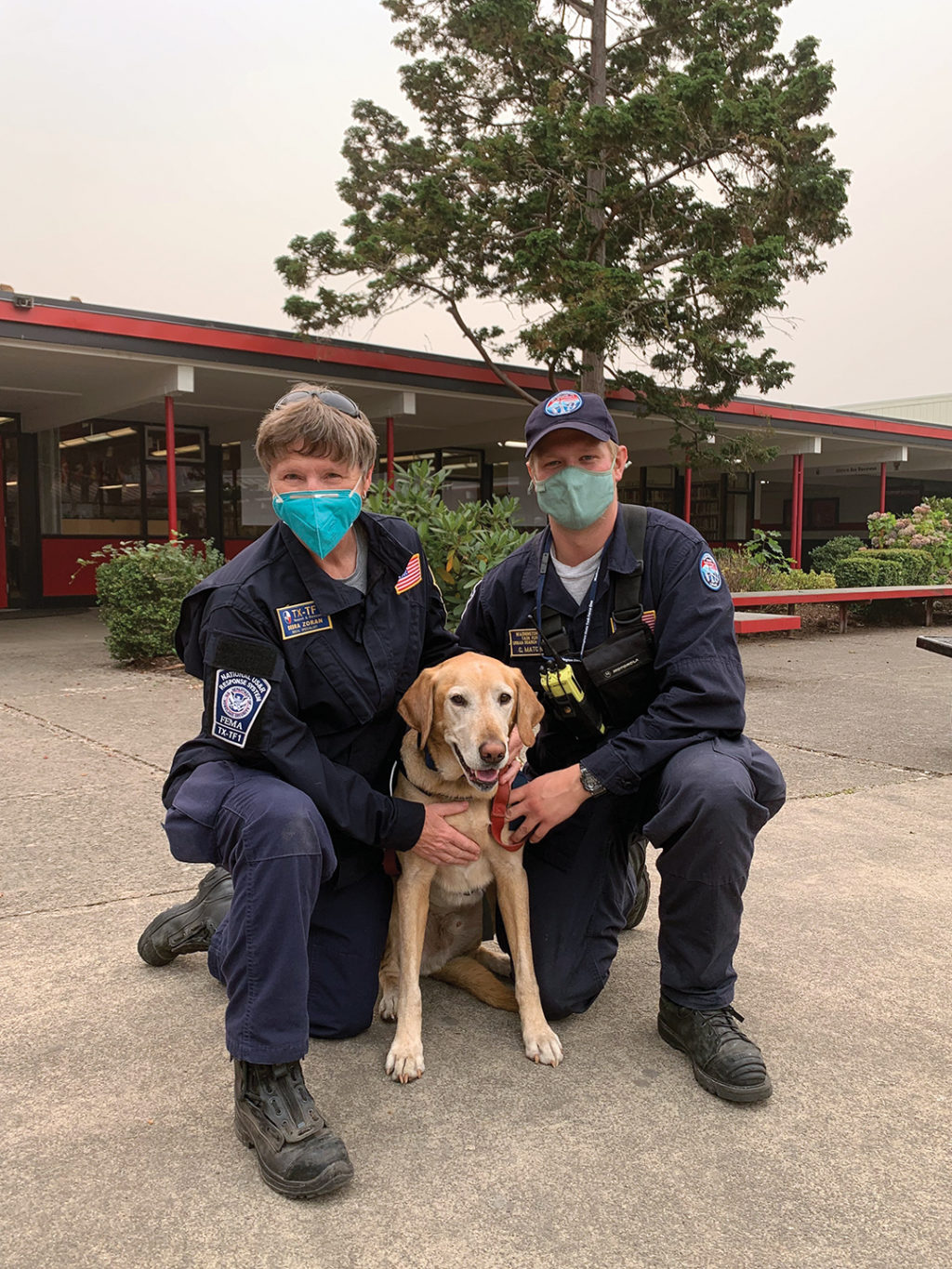Texas A&M Veterinary Emergency Team Continues To Serve Texas And Beyond Despite Recent Challenges
Story by Aubrey Bloom & Melissa Espinoza

Texas A&M Veterinary Emergency Team (VET) director Dr. Wesley Bissett should have known it was going to be a unique year when the team’s first 2020 deployment was to the Texas A&M University campus itself.
In March, the team helped organize the COVID-19 response for the Texas A&M Veterinary Medical Teaching Hospital (VMTH), putting to work their experience in shelter management as the hospital moved to curbside admissions and discharge processes as part of their scaled-back operations.
“The VMTH response was fascinating, and I think our deployment experience definitely assisted with making what was done here successful,” Bissett said. “It wasn’t completely unlike a normal deployment where we go into a disaster area; these are typically chaotic and our charge is to very quickly and efficiently establish a veterinary medical operation. I wouldn’t say the VMTH situation was chaotic, but it was rapidly evolving.”
In addition to new intake procedures for both small and large animals, the response included rerouting the traffic flow around the building to allow clients to stay in their cars while their animals were cared for and establishing protocols for decontaminating pets that may have been in proximity to an ill owner. Many of the procedures that the VET helped implement are still ongoing at the VMTH.
“We plan and train for this, and it allows us to very quickly make decisions and adapt to the situation at hand,” Bissett said. “I hope that our experience and approach played at least some role in what I see as a highly effective operation.”
The remainder of the year was a busy one for the VET; the team deployed five more times, including a tornado response in Polk County, a hurricane response to Hurricane Laura, an out-of-state deployment to California and two single-member deployments, one of which became the VET’s first foray into human medical response.
A Man On A (New) Mission

Veterinary is, obviously, in the name of the VET, so a request to assist with an emergency in human medicine was a new one for Bissett.
In May, he was requested by the Texas Division of Emergency Management (TDEM) to serve as the operations section chief for the epidemiology unit working on case investigations and contact tracing of COVID-19 in the state’s Panhandle region. At the time, the Panhandle was one of the hottest spots in the country for COVID-19 transmission.
The experience gave Bissett an early respect for the virus.
“I will always remember just how difficult this disease is,” he said. “I heard so many discussions of how people were struggling to overcome the disease and I wondered how many will return completely back to pre-infection status or condition.”
Bissett managed a team within the Texas Department of Health & Human Services’ (DHHS) Public Health Region 1, which serves a 41-county area in the Panhandle and South Plains.
“It was an honor to be requested to serve during this deployment. The VET has a very active deployment history, and this experience, combined with a veterinary medical knowledge-base, led to a very successful deployment,” Bissett said. “It also was another opportunity to serve beside the incredible group of people who make up the emergency management community in the state of Texas. We are fortunate in that our state has developed a very robust and capable group of individuals who are focused on serving the state and its citizens when disaster strikes. COVID-19 certainly qualifies as a disaster.
“The VET was built for the state of Texas and its citizens to do whatever job they need of us,” he added. “This kind of response is consistent with the history and tradition of Texas A&M. Aggies stand up even when it is not easy to do so and selflessly serve this state and nation. That history is what drew me to Texas A&M and I am so thankful for the example that has been so aptly provided by Aggies in the past.
One of the reasons Bissett believes it was a successful deployment was the commitment of the people of the Texas Panhandle region.
“The people in the Panhandle really did this in the right way,” he said. “They worked really hard to make sure that cases were isolated, contacts were quarantined, and that those requiring help received it. Everyone involved was definitely committed to serving their community.”
Woman To The (Search &) Rescue

Smoky air, blurry vision, and keeping track of working dog teams in two separate fire regions were just some of the challenges that Dr. Deb Zoran experienced on her deployment to Oregon earlier this year.
Zoran has been with the VET since its inception, so at this point she’s no stranger to the chaos that comes with each deployment.
“It’s always an adventure,” she said.
This summer, wildfires killed 10 people and left 22 missing in central and southern Oregon, so in early September, the Federal Emergency Management Agency (FEMA) responded by deploying Urban Search and Rescue (US&R) teams to the area.
Zoran—one of just three Incident Support Team (IST) Veterinarians in the whole country—was charged with the care of the 12 US&R dogs that were deployed in the search and rescue effort.
As the only veterinarian on-site, Zoran’s job was to ensure the safety and well-being of the US&R canines, which were flown in from all over the nation. These US&R dogs are either specifically trained to detect missing people who are still alive, or live find, or to find the bodies of the deceased, called human remains detection. On this deployment, Zoran was working with the latter, who were searching the rubble of burned homes destroyed by the fast-moving fires.
Over the course of the deployment, Zoran’s emergency management skills and experience were put to the test: Because of the unique challenges of an active fire response, one of the teams ran out of the bandage material necessary to protect the dogs’ feet.
“Fires are obviously really dangerous,” she said. “Normally, it is best not to place bandages on dogs’ feet because they use their feet to grip when they’re working on rubble or they’re climbing terrain. But, when there’s an active fire and the burned out structures may still be exceptionally hot or they must search areas that may still have active hot spots, the dogs’ feet need protection that is best provided with specially constructed bandaging.”
Twelve dogs needing bandage changes several times a day created a bandage shortage, but Zoran’s experience in the logistics and command side of response proved valuable, and she was able to quickly utilize the FEMA resource request system to get more supplies on the ground.
Having someone with her experience is typically a rarity for US&R teams, which is something Zoran has been at the forefront of trying to change.
“My opinion is that there should be a veterinarian, or a veterinary technician, at least, anytime a US&R team deploys their canines into a disaster environment,” she said. “Each team deploys a paramedic, so if a team member gets injured, there’s somebody there in the event of injury.
“But that’s not true for the working dogs, except in a few specific cases like Texas A&M Task Force 1, for example,” she said. “One of my goals is to help change the system to make sure a veterinarian or vet tech is on each team; my other goal is to be sure that those dogs and those teams are supported when they’re in the mission.”
Leading The Way
Each year, it seems the national recognition of the VET grows, and as it does, the team is increasingly asked to assist in new areas. From Bissett’s single-person deployment in the Texas Panhandle, to Zoran’s efforts to increase the awareness of animal care in the national US&R response, the VET continues to lead the way in animal disaster response.
###
Note: This story originally appeared in the Spring 2021 edition of CVMBS Today.
For more information about the Texas A&M College of Veterinary Medicine & Biomedical Sciences, please visit our website at vetmed.tamu.edu or join us on Facebook, Instagram, and Twitter.
Contact Information: Jennifer Gauntt, Director of CVMBS Communications, Texas A&M College of Veterinary Medicine & Biomedical Sciences; jgauntt@cvm.tamu.edu; 979-862-4216


